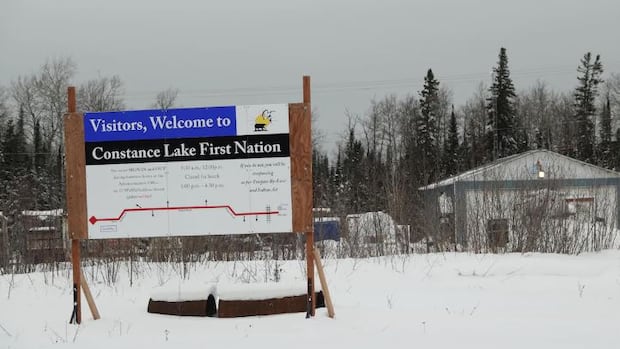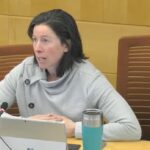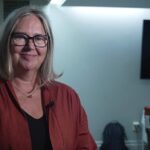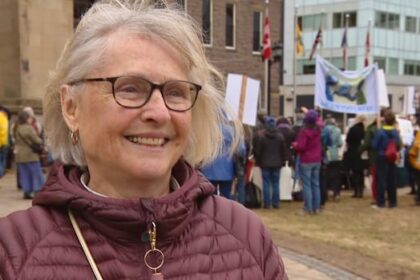Sudbury CommunityA coroner’s jury has heard testimony that members of Constance Lake First Nation continue to live under the threat of a fungal lung disease, four years after an outbreak of blastomycosis claimed five lives in the community near Hearst.Four Rivers Environmental Service part of team that found blastomyces spore in Constance Lake in 2023 sampleKate Rutherford · CBC News · Posted: Nov 07, 2025 6:00 AM EST | Last Updated: 5 hours agoListen to this articleEstimated 5 minutesThe audio version of this article is generated by text-to-speech, a technology based on artificial intelligence.An environmental services provider for Matawa First Nations says the way blastomycosis occurs in the is poorly understood and needs more research, to help First Nations cope with potential outbreaks. (Zacharie Routhier/Radio-Canada)A coroner’s jury has heard testimony that members of Constance Lake First Nation continue to live under the threat of a fungal lung disease, four years after an outbreak of blastomycosis claimed five lives in the community near Hearst.But it also heard about the dogged efforts of one environmental group to continue to track and learn about the conditions that create the spores that cause the disease. An inquest is looking at the circumstances surrounding the deaths of Luke Moore, Lorraine Shaganash, Lizzie Sutherland, Mark Ferris and Douglas Taylor due to blastomycosis.“It’s not a case closed kind of thing,” said Sarah Cockerton, the manager of Four River Environmental Services Group. “The community is still living with this. It is still there.”She said people continue to live in fear and that’s why the search for potential sources of blastomycosis must continue. “If you’ve got something living in your backyard and you don’t know what it is, you’ve got this feeling all the time, it’s creeping up behind you,” said Cockerton. Four Rivers provides environmental services under the direction of nine Matawa member First Nations, combining traditional knowledge and modern science.Blastomycosis is caused by inhaling spores created naturally when organic matter rots in moist conditions, such as on the shores of lakes or in wood piles, and the spores are eleased when the soil is disturbed.As the organization scrambled to respond to a situation they knew little about and to support the community during the 2021 outbreak, Cockerton said they were told by experts that the source was likely gone and they would never find it.She said scientific literature told them that the spores were ephemeral, that the same spot could be tested and a positive sample might be found one week in six, like a needle in a haystack.“There is this big underlying thing that it’s never going to be found, it can’t be found and it’s a waste of time trying to find it,” she said.Despite that, Cockerton said they conducted extensive sampling of sites, including old woodpiles, the shores of lakes and around the community’s sewage lagoon in Constance Lake throughout the fall and winter of 2021.Samples were taken from the shore of Constance Lake in the search for the source of blastomycosis (Kate Rutherford/CBC)The samples, sent to a company called Sporometrics with a lab in Toronto, came back negative, just like the samples Sporometrics gathered itself in December 2021.Cockerton said at a meeting in late summer of 2022, with negative test results piling up, a councillor with Constance Lake First Nation, Roger Wesley, urged her organization to keep going to try to find a solution.She said Four Rivers had formed a theory, based on a review of scientific literature, that the spores were more likely to be created after a pattern of drought followed by heavy rain followed by humid weather.Cockerton said her group installed a weather station in Constance Lake and monitored it for those conditionsFour Rivers develops its search strategyShe said Four Rivers also refined its sampling methods—instantly freezing samples to preserve them–and worked with a scientist and lab in Thunder Bay.They seized the moment in 2023 when the weather conditions aligned, and in one day took 15 samples around Constance Lake.That’s when they found their needle in a haystack.In a news release in February, 2024, Matawa First Nations announced Four Rivers had isolated evidence of the blastomyces spore in Constance Lake territory, only the second time in Ontario it had ever been done.The precise location was not named, but Cockerton said it’s significant because it proves the continued existence of the spore in the community of 800 people.She said it also gives hope that, if they continue their work, they will better understand how the naturally occurring phenomenon behaves, which could lead to developing an early warning system for when exposure risk might be high. It’s our community. It’s family. We’re going to go there- Sarah Cockerton, Four Rivers Environmental ServicesOnce the positive result was isolated, Cockerton said the group was contacted by the Ottawa-based Laboratory Centre for Disease Control, and was surprised to find on a call with them, a host of public health agencies expressing concern about possible exposures to those gathering samples in Constance Lake.She pointed out that while those taking samples wore full personal protective equipment, people were living in the community without any protection.“It’s our community, it’s family, we’re going to go there,” she said.Cockerton said there was one case of a community guardian in Constance Lake working on sampling who did get sick from blastomycosis, but he attributed it to moving a wood pile when he wasn’t protected.She said Four Rivers continues collecting samples and the ones from this year and last year are being processed at a lab in Thunder Bay. ABOUT THE AUTHORKate Rutherford is a CBC newsreader and reporter in Sudbury, covering northern Ontario. News tips can be sent to kate.rutherford@cbc.ca
Friday, 7 Nov 2025
Canada – The Illusion
Search
Have an existing account?
Sign In
© 2022 Foxiz News Network. Ruby Design Company. All Rights Reserved.
You May also Like
- More News:
- history
- Standing Bear Network
- John Gonzalez
- ᐊᔭᐦᑊ ayahp — It happened
- Creation
- Beneath the Water
- Olympic gold medal
- Jim Thorpe
- type O blood
- the bringer of life
- Raven
- Wás’agi
- NoiseCat
- 'Sugarcane'
- The rivers still sing
- ᑲᓂᐸᐏᐟ ᒪᐢᑿ
- ᐅᑳᐤ okâw — We remember
- ᐊᓂᓈᐯᐃᐧᐣ aninâpêwin — Truth
- This is what it means to be human.
- Nokoma












